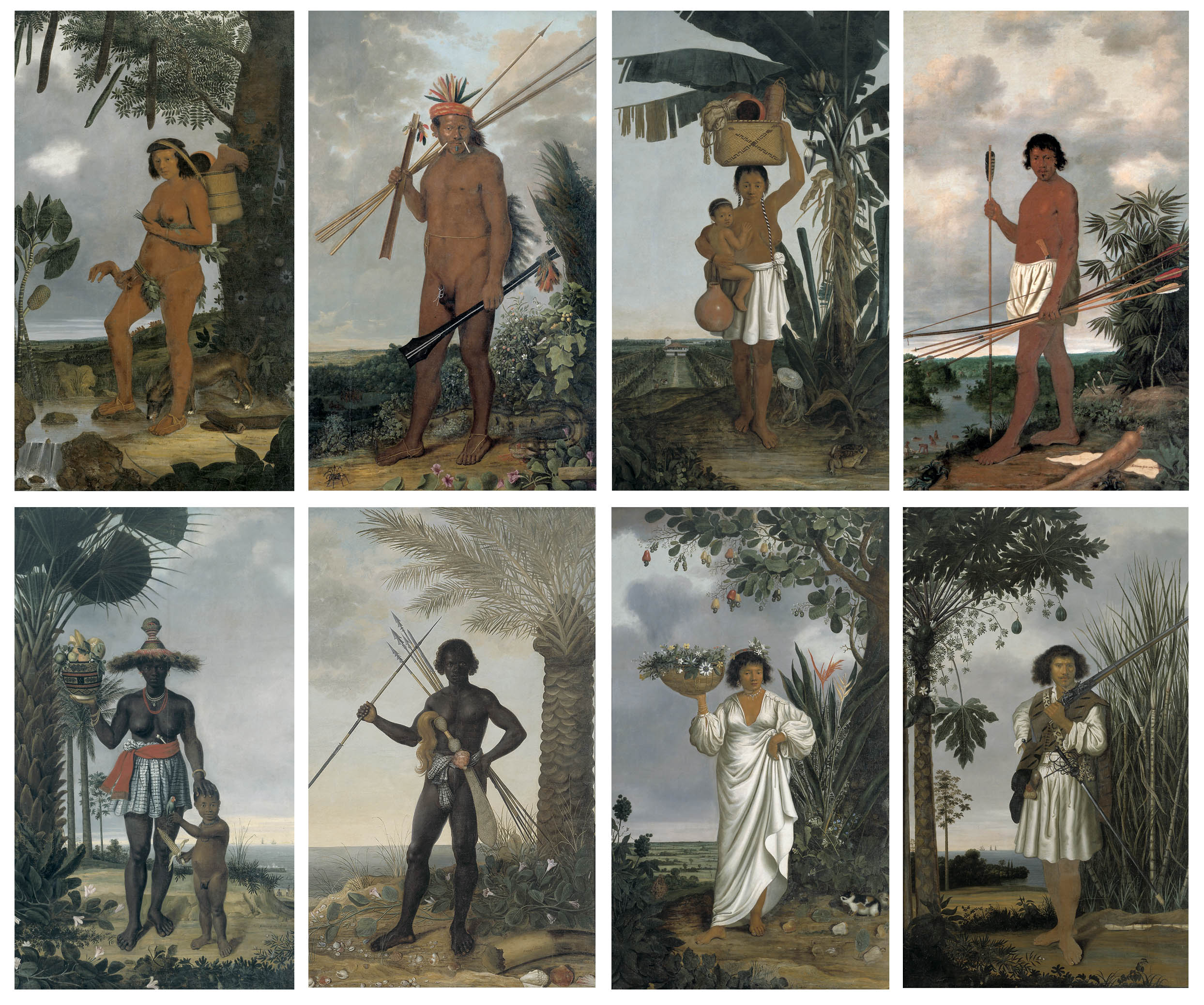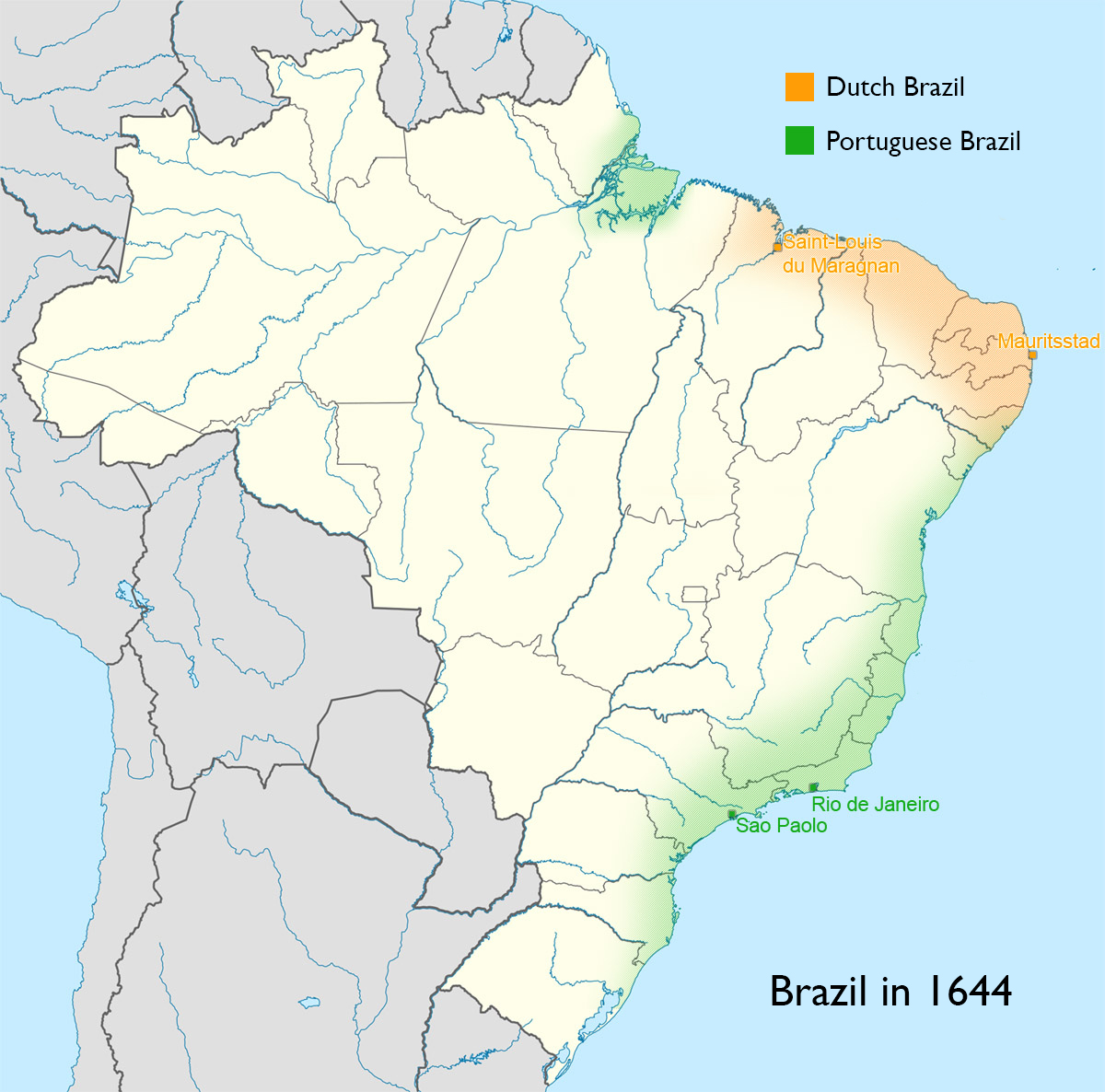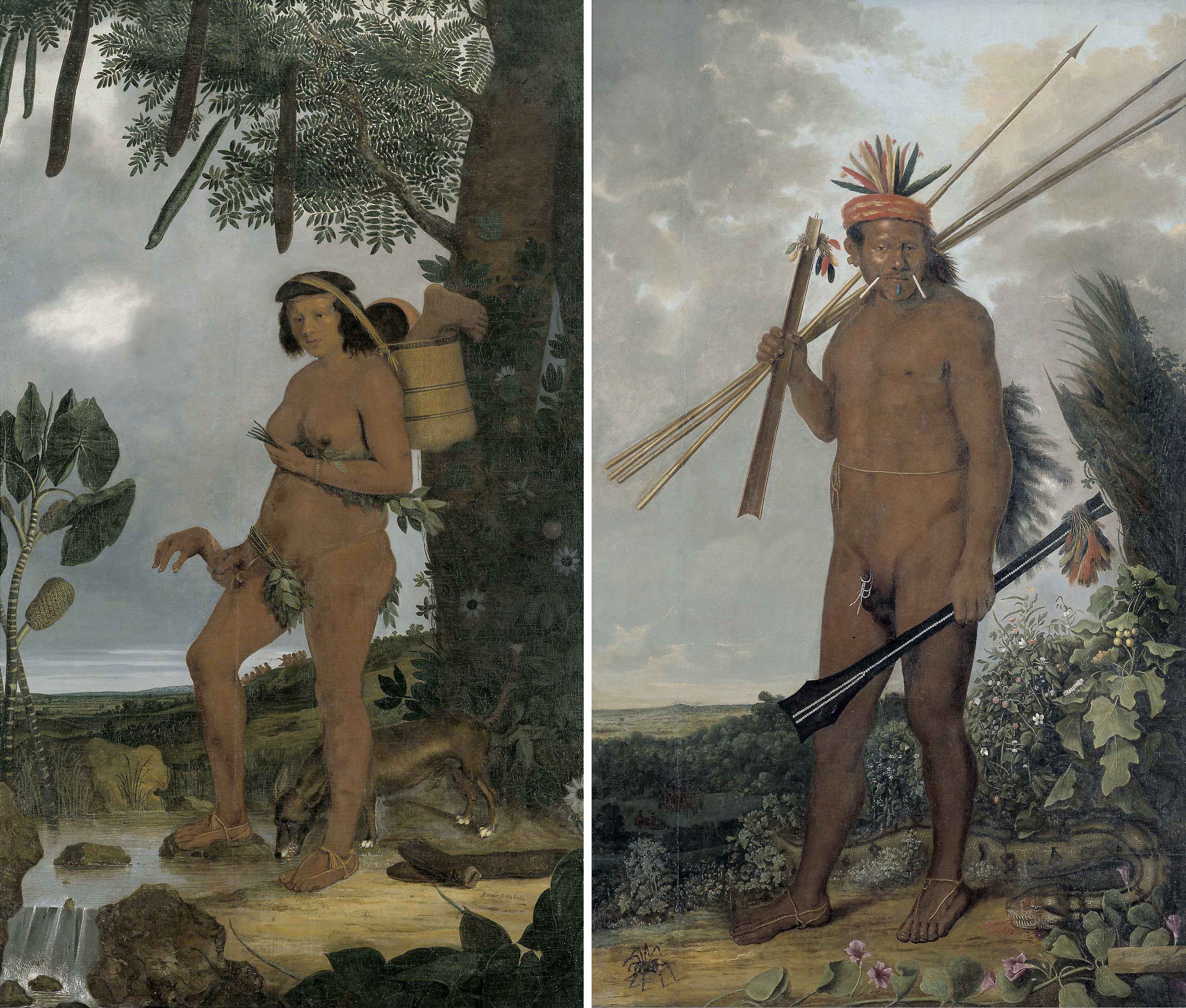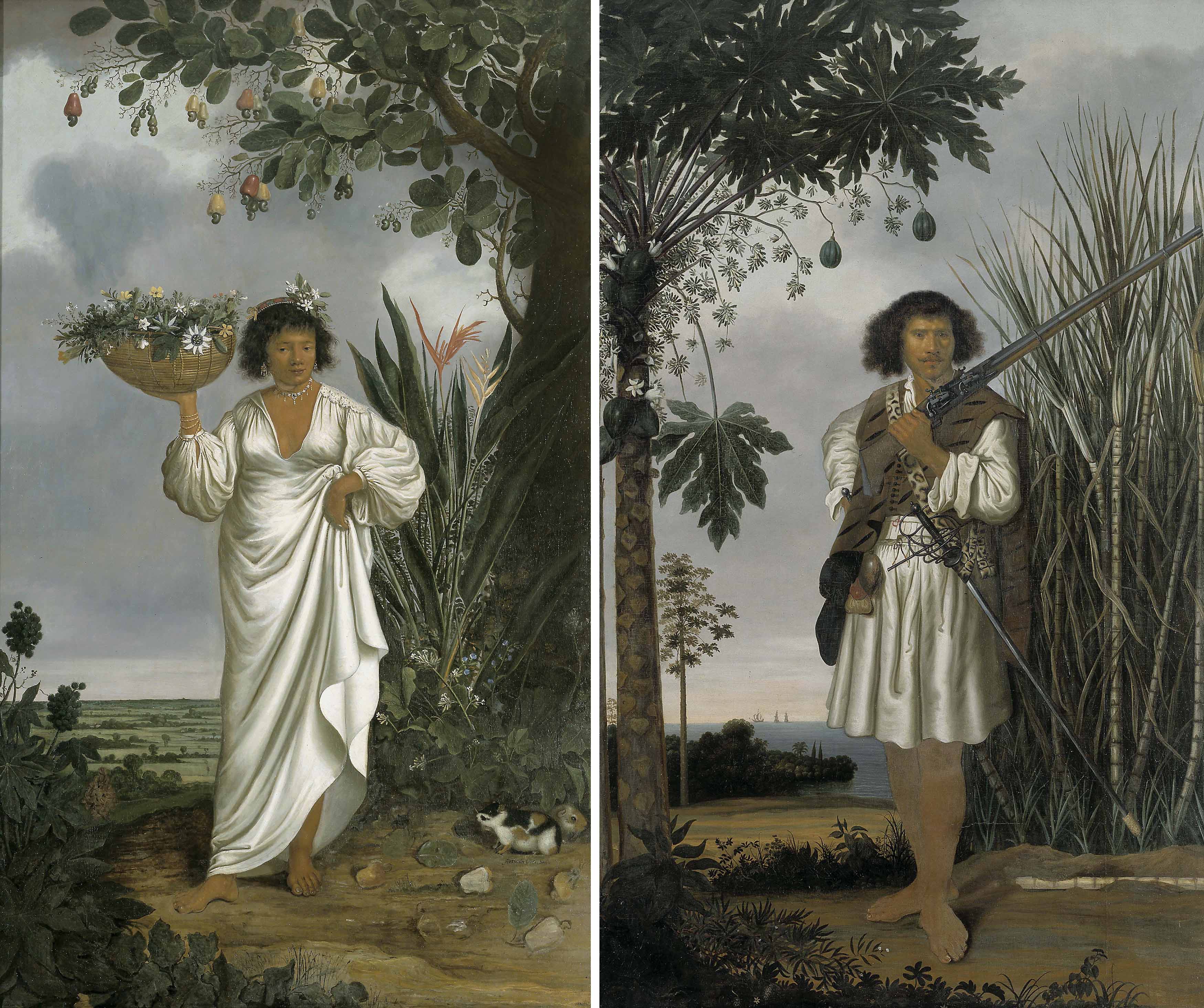Albert Eckhout, Series of Eight Figures From Rachel Zimmerman, "Albert Eckhout, Series of Eight Figures," in Smarthistory, June 11, 2018.

Albert Eckhout, Series of Eight Figures, 1641. Oil on canvas. National Museum of Denmark, Copenhagen.

Map of Brazil in 1644, showing Dutch and Portuguese territories. Source: Carl Pruneau, CC BY 3.0.
In 1630, the Dutch conquered the prosperous sugarcane-producing area in the northeast region of the Portuguese colony of Brazil. Although it only lasted for 24 years, the Dutch colony resulted in substantial art production. The governor Johan Maurits van Nassau-Siegen also encouraged scientific exploration and his palace in Mauritsstad (present-day Recife) included botanical gardens, a zoo, and a cabinet of curiosities. Maurits brought two artists, Albert Eckhout and the landscape painter Frans Post, to Brazil to document the local flora, fauna, people, and customs. One of Eckhout’s series of eight paintings helps us to understand how the Dutch artist encoded ethnic differences among the colony’s population.
Making Order of a Foreign World
Eckhout’s series consists of four life-size male-female pairs, each representing a different cultural or ethnic category. Although Eckhout collaborated with scientists on other projects, these monumental oil paintings employ the visual language of fine art rather than of scientific illustration. The compositions and poses are based on European portrait conventions and some panels include mythological references.
Eckhout may have used live models, and the level of detail gives the impression that these are portraits. However, they are meant to represent “types” rather than individuals. Much like New Spanish casta paintings, Eckhout conveys the moral and cultural stereotypes associated with each group. Clothing, jewelry, weapons, and baskets help to indicate the class and level of sophistication of the figures, while the proliferation of tropical fruits and vegetables advertises the natural abundance of the Brazilian land.

Hans Burgkmair, Left Side of King Cochin, from Set of Exotic Races, 1508, printed 1922 by the Kupferstichkabinett, Staatliche Museen zu Berlin. Woodcut, 26.6 x 35 cm. The Metropolitan Museum of Art, New York.

Albert Eckhout, Coconuts, c. 1637–44. Oil on canvas, 92 x 93 cm. National Museum of Denmark, Copenhagen.
Today, scientists recognize that the idea of separate human races is socially constructed rather than based in genetics. Although the classification of peoples into groups has a long history in Western art and science, skin color was not a major defining factor until around the middle of the seventeenth century—around the same time that Eckhout painted this series. Before this, ethnic groups were conceptualized based on cultural characteristics. For instance, the early 16th-century woodcuts of Hans Burgkmair differentiated the peoples of Africa and India by their hairstyles, material culture, and behaviors, but united all the figures with the same type of idealized body. Eckhout, on the other hand, pays careful attention to skin color and physiognomy as he categorizes the people of Brazil.
Most scholars believe that these paintings were produced in Brazil to be hung in the governor’s palace. They may have been arranged around a large room with other paintings by Eckhout, including a portrait of Johan Maurits and still life paintings of tropical fruits and vegetables. The series functioned as an extension of Maurits’s cabinet of curiosities, enabling him to “possess” the portrayed figures. After the Dutch lost their Brazilian colony in 1654, Johan Maurits presented the paintings to the king of Denmark, as they had become unwelcome reminders of the failed colony.



